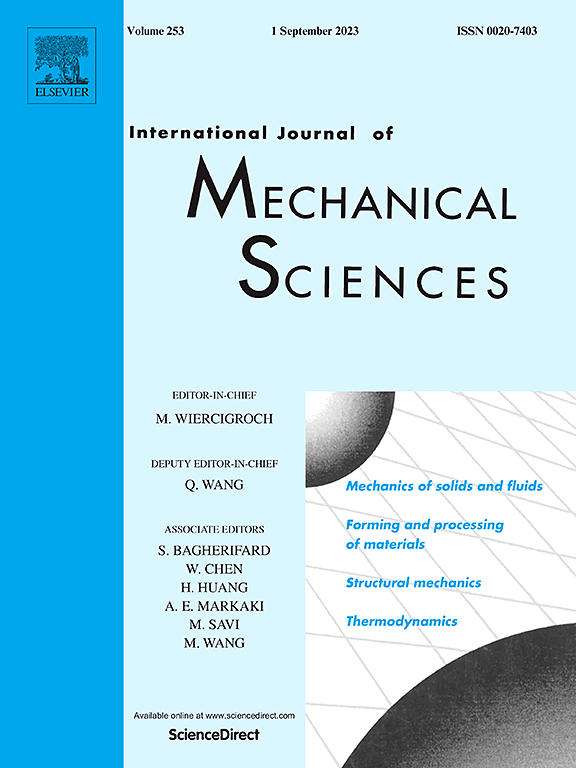Tunable anisotropy in lattice structures via deep learning-based optimization
IF 7.1
1区 工程技术
Q1 ENGINEERING, MECHANICAL
International Journal of Mechanical Sciences
Pub Date : 2025-03-03
DOI:10.1016/j.ijmecsci.2025.110121
引用次数: 0
Abstract
The advancements in additive manufacturing have sparked extensive exploration of lattice truss structures, renowned for their exceptional properties suitable for diverse engineering applications. Achieving a high mechanical modulus while maintaining low density poses a challenge, prompting numerous studies aimed at addressing the trade-off relationship between porosity and modulus. However, most efforts have concentrated on enhancing modulus for unidirectional loads, a limitation in addressing the random loads commonly found in industrial settings. To tackle this issue, our study designs lattice structures that achieve significantly reduced anisotropy at low densities, employing a combination of neural networks and genetic optimization. This novel approach allows for the efficient derivation of optimized models. Importantly, our approach solely alters the beam shapes within the basic lattice structure configurations, facilitating manufacturability without reducing average stiffness. Furthermore, our research elucidates the mechanism behind shape-dependent anisotropy and confirms these findings through both numerical and experimental results, offering insights into the design limitations and potential for next-generation lightweight structures.

求助全文
约1分钟内获得全文
求助全文
来源期刊

International Journal of Mechanical Sciences
工程技术-工程:机械
CiteScore
12.80
自引率
17.80%
发文量
769
审稿时长
19 days
期刊介绍:
The International Journal of Mechanical Sciences (IJMS) serves as a global platform for the publication and dissemination of original research that contributes to a deeper scientific understanding of the fundamental disciplines within mechanical, civil, and material engineering.
The primary focus of IJMS is to showcase innovative and ground-breaking work that utilizes analytical and computational modeling techniques, such as Finite Element Method (FEM), Boundary Element Method (BEM), and mesh-free methods, among others. These modeling methods are applied to diverse fields including rigid-body mechanics (e.g., dynamics, vibration, stability), structural mechanics, metal forming, advanced materials (e.g., metals, composites, cellular, smart) behavior and applications, impact mechanics, strain localization, and other nonlinear effects (e.g., large deflections, plasticity, fracture).
Additionally, IJMS covers the realms of fluid mechanics (both external and internal flows), tribology, thermodynamics, and materials processing. These subjects collectively form the core of the journal's content.
In summary, IJMS provides a prestigious platform for researchers to present their original contributions, shedding light on analytical and computational modeling methods in various areas of mechanical engineering, as well as exploring the behavior and application of advanced materials, fluid mechanics, thermodynamics, and materials processing.
 求助内容:
求助内容: 应助结果提醒方式:
应助结果提醒方式:


